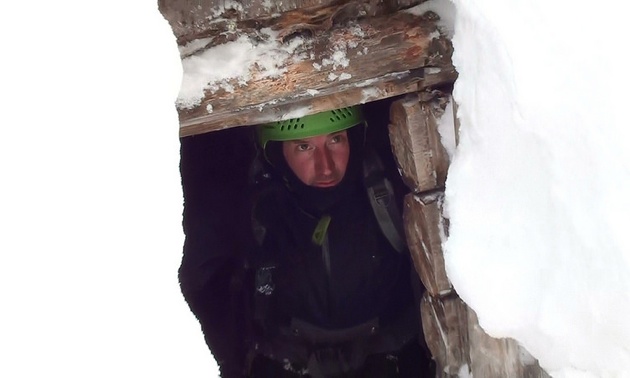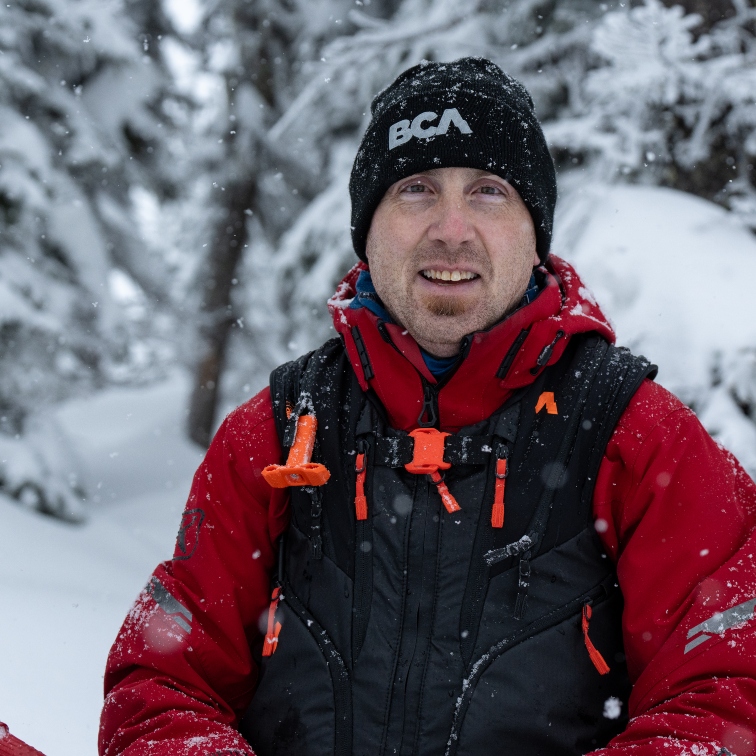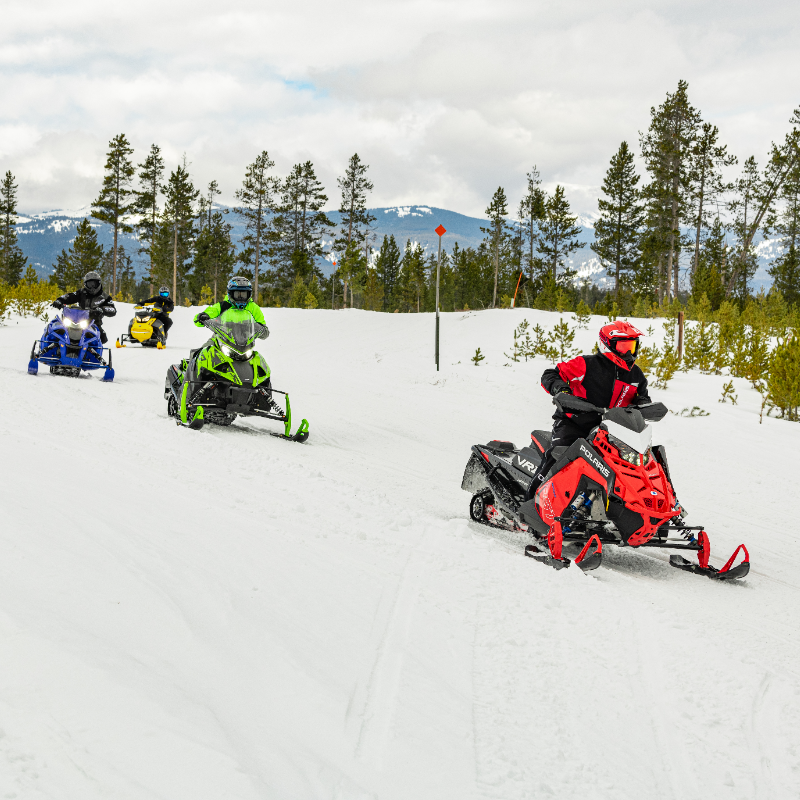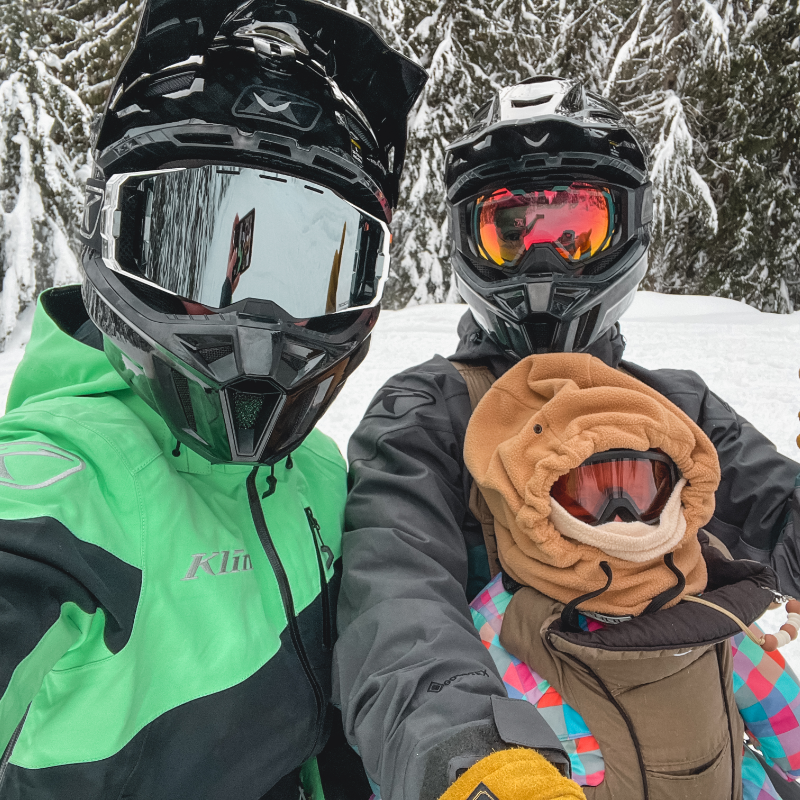While avalanche skills training is important, some feel it makes them invincible. How is it that Revelstoke search and rescue volunteers had to find 25 stranded people in their backcountry within a 33-day span in December 2013? All accidents? I think not. Along with getting AST education, we as snowmobilers must always—I mean always—use our heads.
Understand your skill level
A little dose of humble goes a long way when it comes to backcountry riding. Know your skill level and ride within it. Your group is only as strong as its weakest rider, so it’s important to be honest with your group. Certain terrain should be left to more experienced riders, such as dropping into bowls where it takes skill to get back out.
Know where you are going
Just because there are tracks doesn’t mean you should follow them. Many tracks are made by experienced riders, so unless you’re the next coming of Chris Burandt with a fresh stash of horseshoes and the magical power to have Scotty beam you up, know where you are at and where you're going at all times. In some situations the tracks could be laid by those who are lost—or in the process of becoming lost—so following them is obviously not a great idea.
Network with local snowmobile clubs, who can point you in the right direction and quite often hook you up with people to ride with. Their knowledge of the terrain and conditions could be not only a trip saver, but a life saver.
Some areas have professional guides. While the cost may seem high, when split between group members the expense becomes realistic. Guides will keep you safe and most likely show you the time of your life by taking you into areas off the beaten path, assuring your safety along the way.
Reaching out to local dealerships can also be a way to meet local riders.
A cautionary tale
Rider and passionate supporter of ABCSnow Colin Burke explains what he has seen in his home area of Stewart, B.C.
“Our area is so large it is easy to become lost and disoriented, even for local snowmobilers in bad weather," Burke said. "Massive storms with enormous volumes of snowfall are frequent in the Stewart area. This can create a catch-22 type situation. In one instance a group of three (two men and one woman) were stranded for four days. They spent two nights at the Silvertip cabin, then two nights dug into a snow cave.
"Bad weather and close to two metres of snowfall contributed to their situation. They had no guide or locals to help them navigate the terrain. Luckily they knew enough to be prepared and lived to tell their tale.”
This happens far too often within the sport of snowmobiling. The Silvertip cabin is actually not far from civilization and is a common meeting place, but they didn’t know the area well enough to facilitate rescue.
Know where the shelters are
Clubs, this is one reason it is important to provide and maintain the cabins in your area. While they are fun to visit, sometimes they can be the difference between life and death. Know where all the cabins are in your ride areas, for sometimes even the most primitive structure can be the difference between death and survival.
Know your machine's ability
Machine choice can also play a part in the grand scheme of things. Remember what drops down usually must go up again, so if you’re dropping with an underpowered machine the chances of you following 800 cc or greater machines out is very slim. Skill isn’t everything; sometimes it indeed is machine choice. The technology of machines has advanced tremendously over the past decade, giving newer machines a definite advantage. Understand your machine’s capabilities and make choices that complement it.
Know the riders you are with
The perpetual wanderer puts many a rider at risk each season. You know, the rider who seems to disappear without letting others know where they’ve gone. Dusk falls, and riders realize they need to find their missing friend. They have no choice but to venture out looking for the needle in the haystack. Not only is this dangerous for the single rider, who could succumb to any number of tragedies riding alone, but it is dangerous for the group, which is now forced to search for the missing rider.
End your ride before dark
It’s always safer to arrive back at the staging area during daylight hours. If there is a need for rescue extraction, keep in mind that helicopters most likely will not attempt a rescue at night. Sometimes you have to make very calculated choices about who you ride with.
There is an individual we simply choose to not ride with, for at 4 p.m., like clockwork, he disappears—only to be stuck in the most ridiculous predicament in the middle of the gnarliest chute in the area. Time spent looking for him, plus the time to extract him, is time taken away from our own safety. We ride to survive and make choices to ride with people who have the same mindset.
Seek balance
I am a mother of four beautiful children. I am a wife of a loving husband. I am a friend. I am a sister. I know for certain if I were to die snowmobiling not one person who cares for me would be comforted by the statement, “she died doing what she loved.” There is so much value in human life, much more than thrills and an adrenaline rush. I suggest a balance. Push yourself to your own limits and boundaries, within reason. Grow your skills and awareness at the same time. Professional skill development clinics are a wonderful resource to maximize your efforts.
Instructor Geoff Kyle of Geoff Kyle’s Freeride, located in the Coast Mountains near Whistler, has some words of wisdom and experience to riders everywhere:
“The backcountry offers a wide variety of adventure, and can seem tranquil and inviting to all levels of enthusiasts," Kyle said. "There is a flip side to this, where the backcountry can also be very hazardous, and dangerous to a fatal degree. This is why education and experience and knowledge are key factors in having a great backcountry experience, helping you come home safely at the end of the day. By using guiding outfits and riding with locals who know the history and the terrain, it puts the odds in your favour. You will have the time of your life, and continue to do so.”
Know before you go. The old saying is true: sometimes you just don’t know what you don’t know. Take the first step and reach out to educators. This choice can save your life and propel the sport of snowmobiling to a whole new level of respect in the eyes of those watching.







